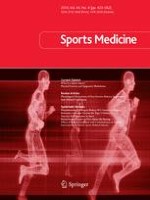Published in:

01-10-2002 | Review Article
Factors Affecting the Rate of Phosphocreatine Resynthesis Following Intense Exercise
Authors:
Shaun McMahon, David Jenkins
Published in:
Sports Medicine
|
Issue 12/2002
Login to get access
Abstract
Within the skeletal muscle cell at the onset of muscular contraction, phosphocreatine (PCr) represents the most immediate reserve for the rephosphorylation of adenosine triphosphate (ATP). As a result, its concentration can be reduced to less than 30% of resting levels during intense exercise. As a fall in the level of PCr appears to adversely affect muscle contraction, and therefore power output in a subsequent bout, maximising the rate of PCr resynthesis during a brief recovery period will be of benefit to an athlete involved in activities which demand intermittent exercise. Although this resynthesis process simply involves the rephosphorylation of creatine by aerobically produced ATP (with the release of protons), it has both a fast and slow component, each proceeding at a rate that is controlled by different components of the creatine kinase equilibrium. The initial fast phase appears to proceed at a rate independent of muscle pH. Instead, its rate appears to be controlled by adenosine diphosphate (ADP) levels; either directly through its free cytosolic concentration, or indirectly, through its effect on the free energy of ATP hydrolysis. Once this fast phase of recovery is complete, there is a secondary slower phase that appears almost certainly rate-dependant on the return of the muscle cell to homeostatic intracellular pH. Given the importance of oxidative phosphorylation in this resynthesis process, those individuals with an elevated aerobic power should be able to resynthesise PCr at a more rapid rate than their sedentary counterparts. However, results from studies that have used phosphorus nuclear magnetic resonance (31P-NMR) spectroscopy, have been somewhat inconsistent with respect to the relationship between aerobic power and PCr recovery following intense exercise. Because of the methodological constraints that appear to have limited a number of these studies, further research in this area is warranted.
